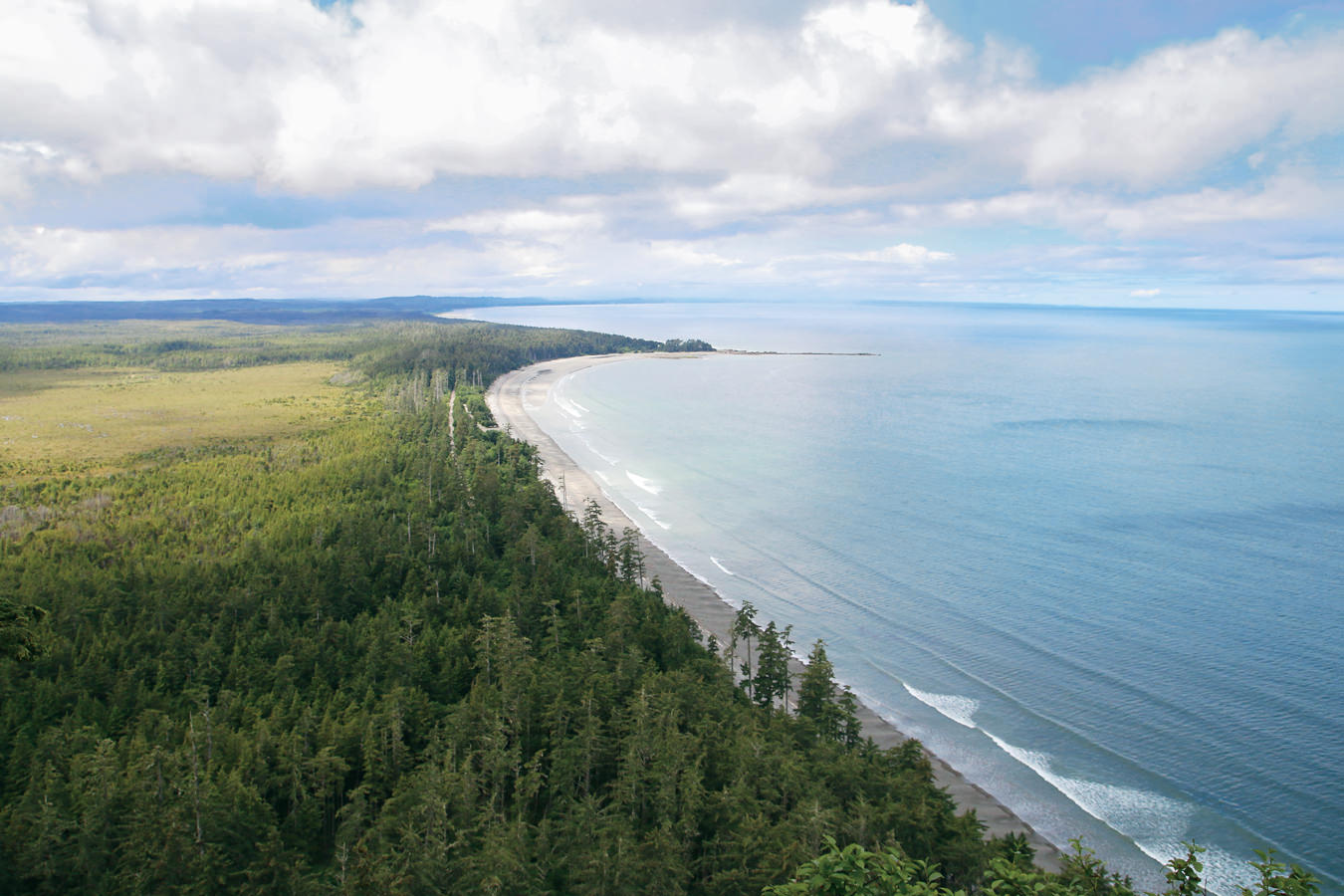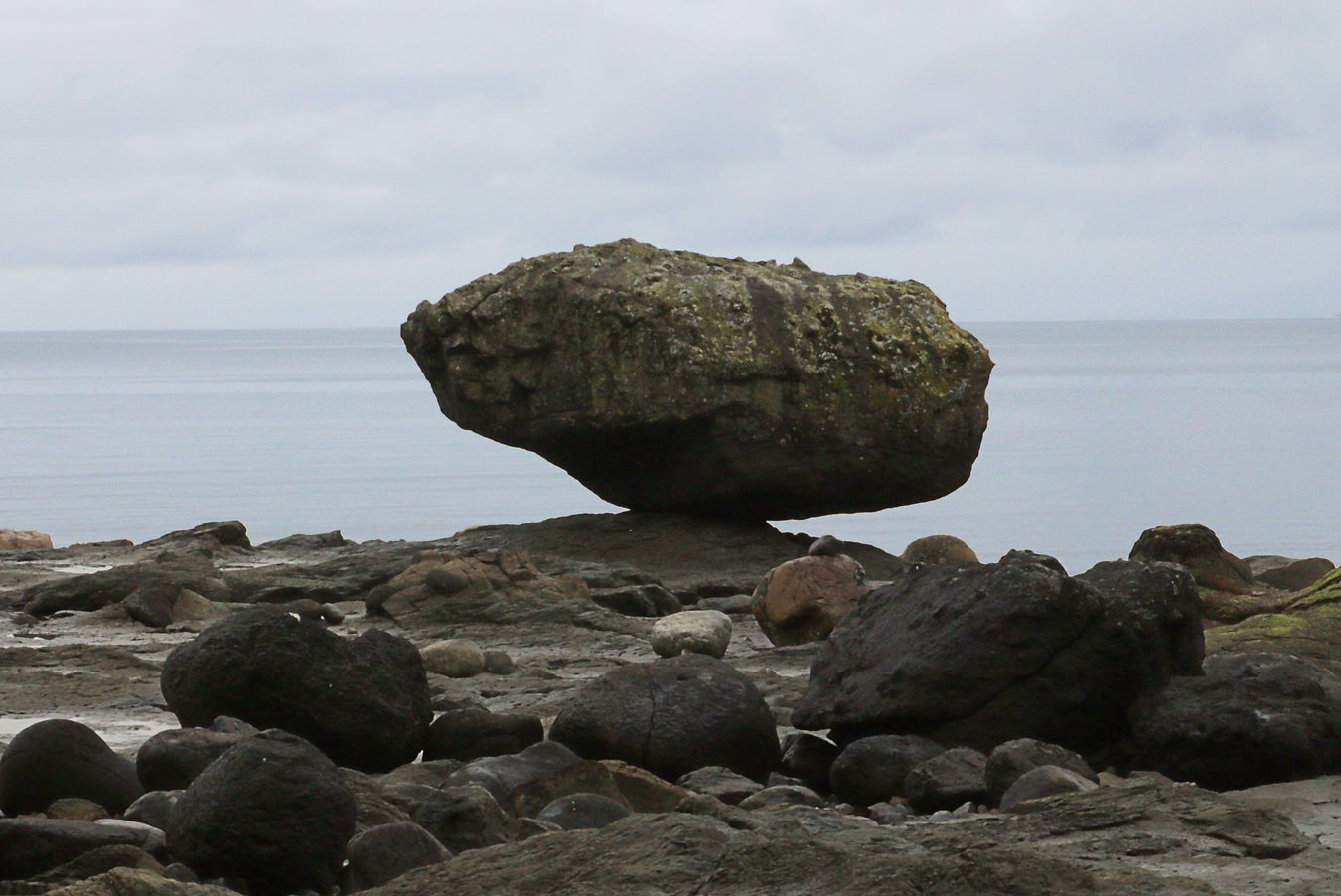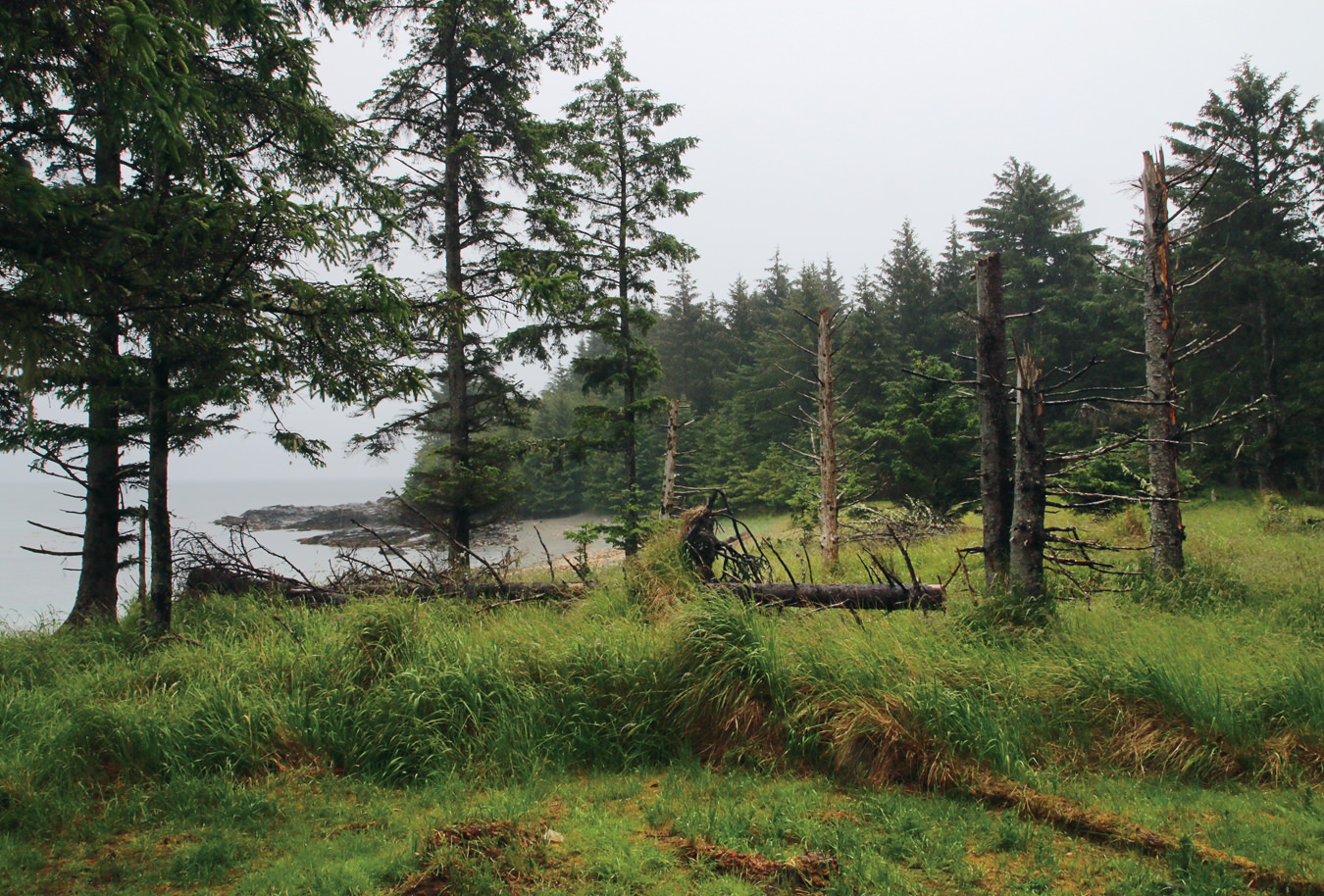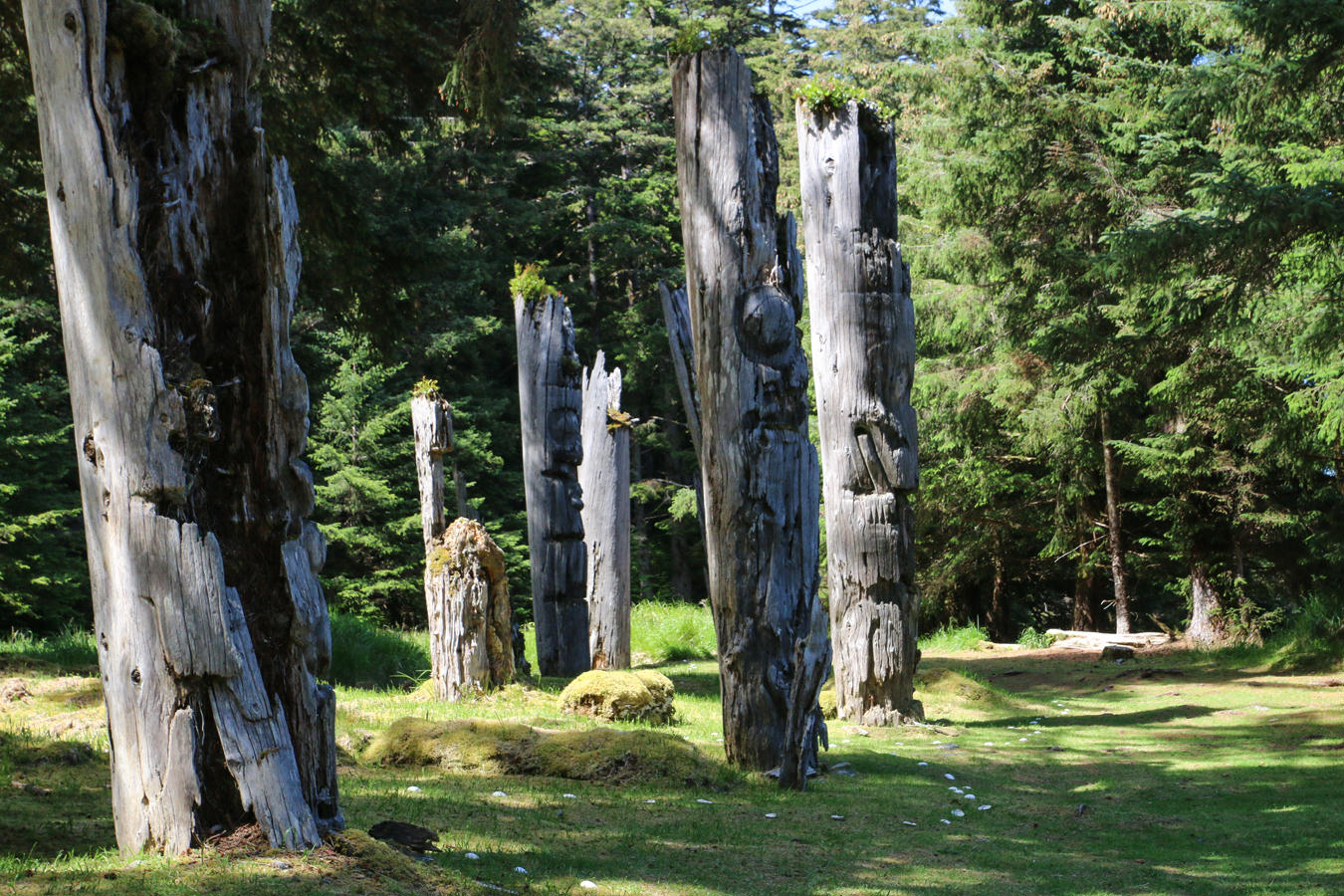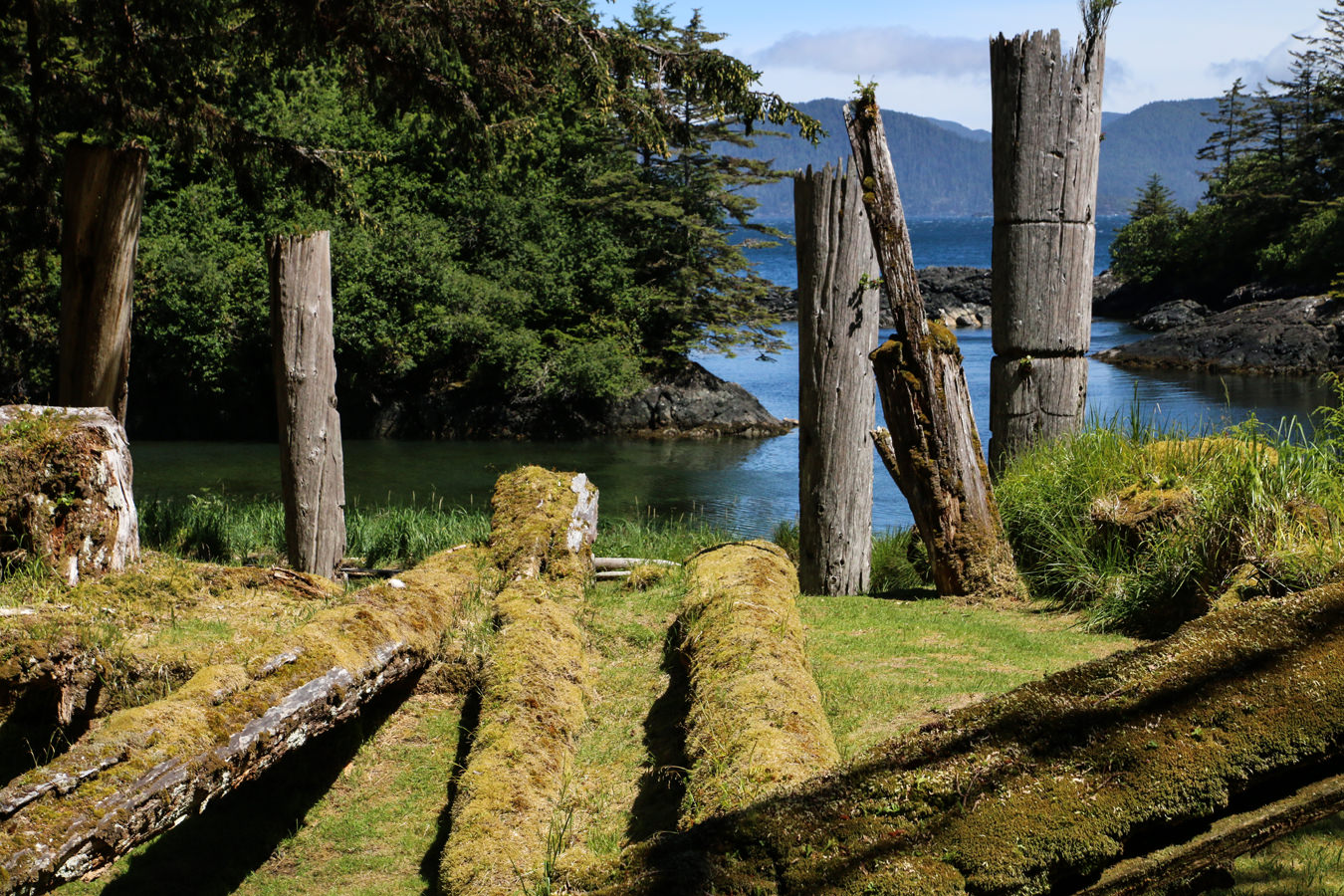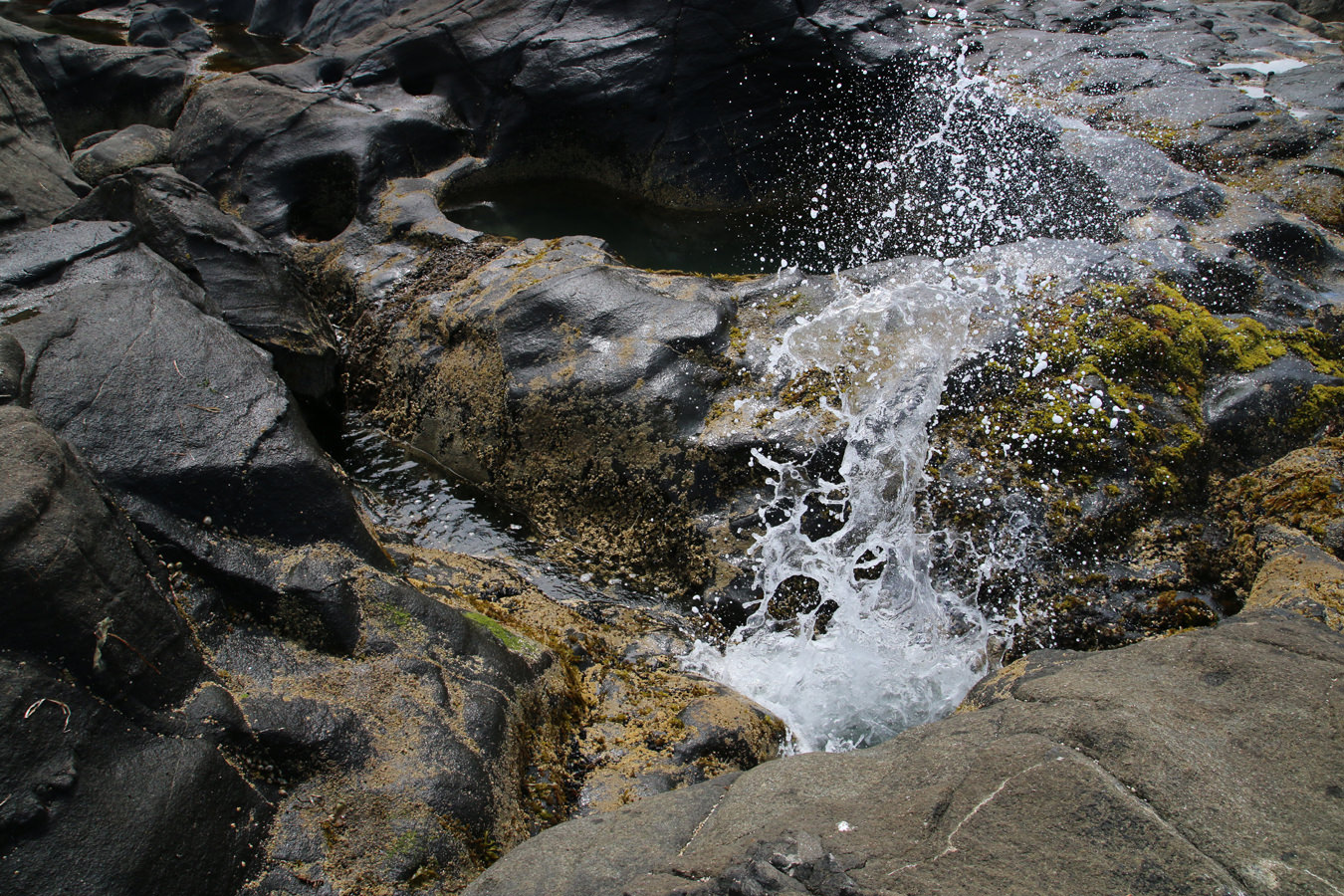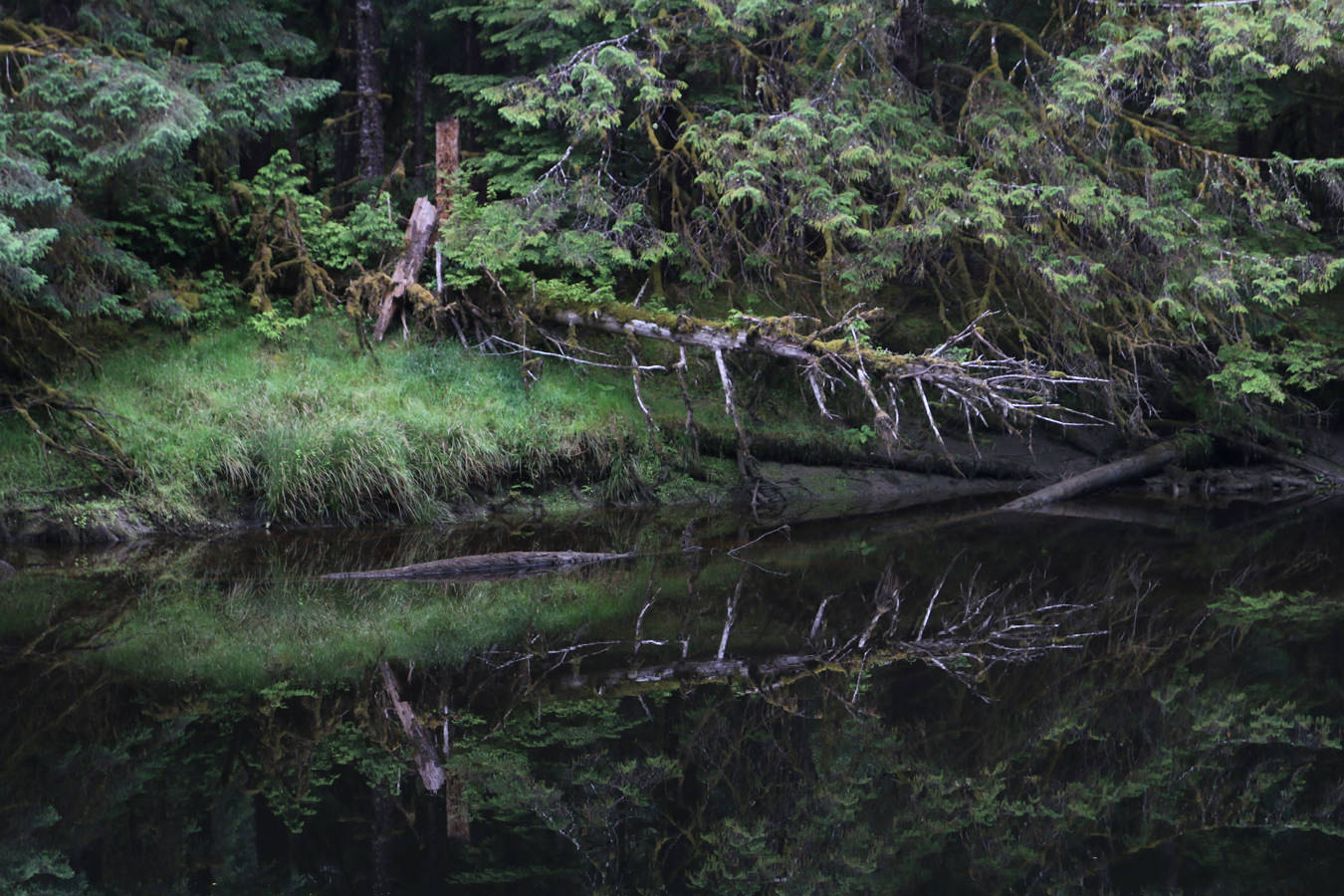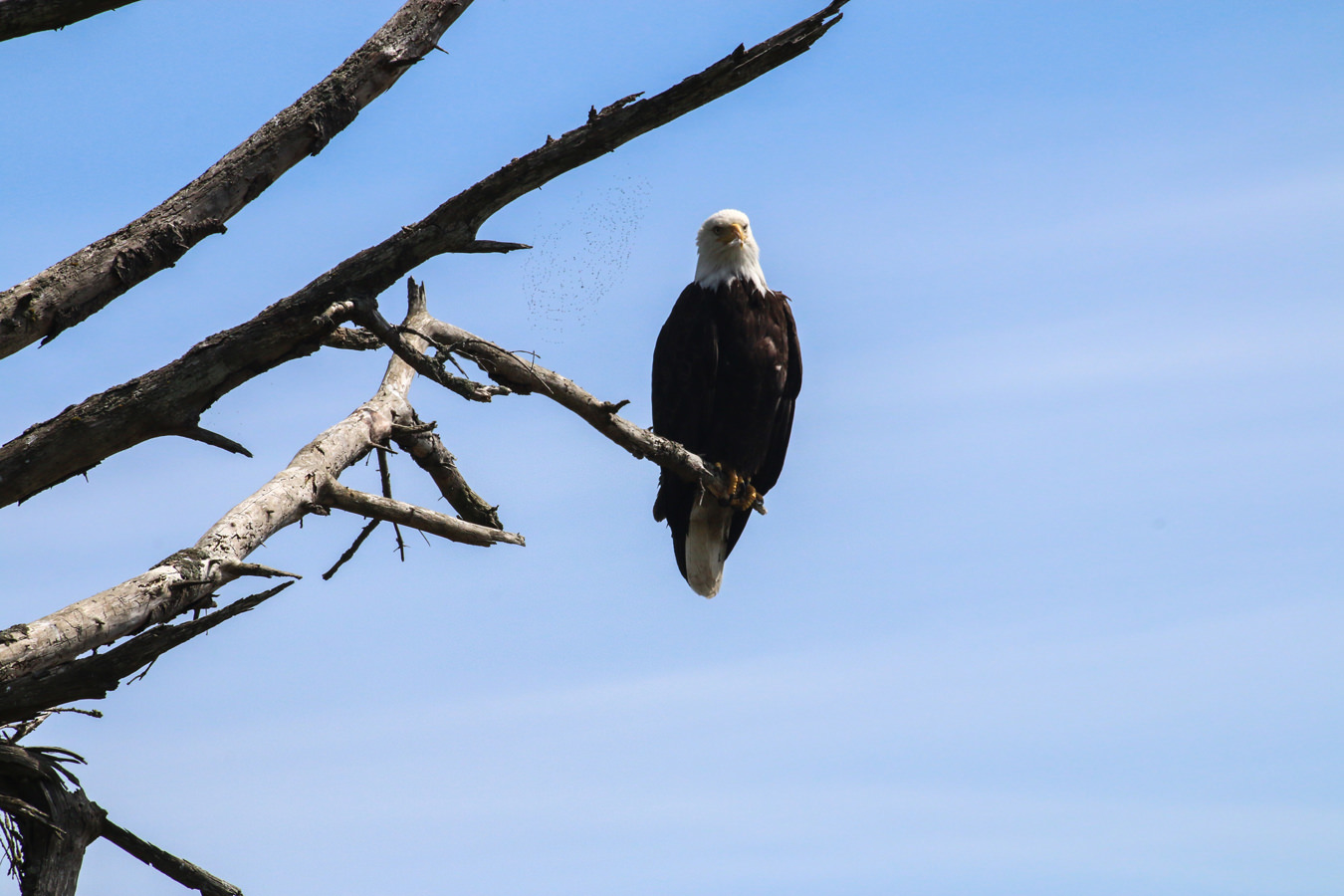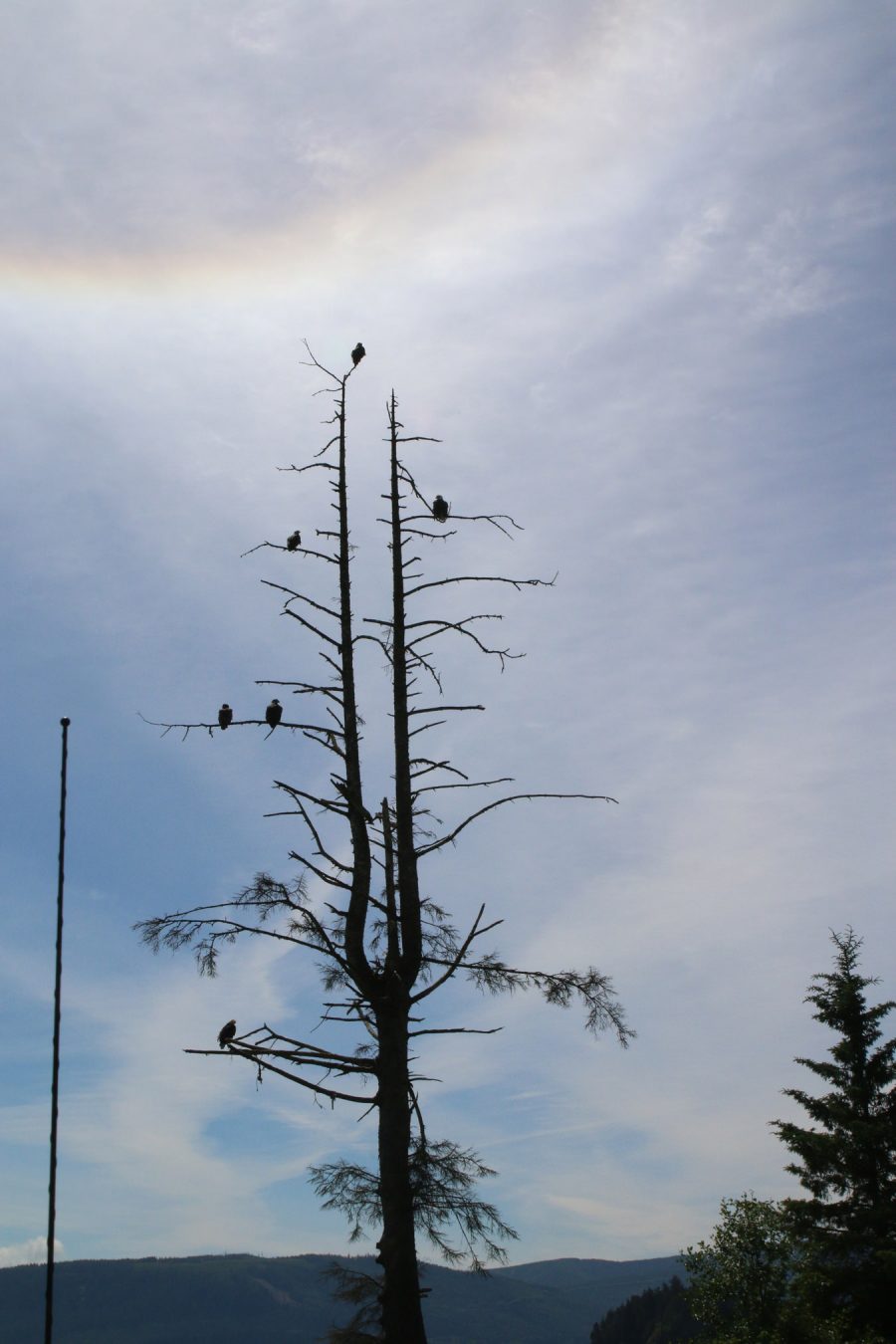Just off the highway on Haida Gwaii’s Graham Island and down a short path near the village of Skidegate, tall green cedar trees give way to a rocky beach. And in the clearing just up ahead sits a big, heavy, jagged boulder that appears as if frozen in momentum—set with its larger surface in the air and its small edge wedged into rocks below, it stands perfectly balanced in front of the Pacific beyond, a natural physical anomaly.
Balance Rock, as it is called, is something of a symbol for all of Haida Gwaii: strive to strike equilibrium. In that symmetry, there is harmony between not just opposing sides, but all moving parts. In balance comes stillness. In stillness comes peace.
Formerly known as the Queen Charlotte Islands, Haida Gwaii is made up of more than 150 islands off the coast of British Columbia, making it Canada’s remotest archipelago. Of the vast approximate 1,000,000 hectares of land mass, only two islands on Haida Gwaii are developed: Moresby and Graham. As such, the area largely remains in its pristine natural condition, providing a safe haven for incredible and diverse wildlife both on land and in water. Haida Gwaii takes its name from the Haida people, who have lived on its islands for thousands of years. The Haida culture is intrinsically tied not only to one’s experience on island, but to the very trees you stand below, the very ocean you dip your toes into. Historically, the Haida Nation thrived here, living off the land, taking only what was necessary. In 1787, British Captain George Dixon (who named the islands after his boat, The Queen Charlotte) and his fleet arrived, bringing with them diseases, including smallpox that all but eradicated the Haida, shaving their population of around 7,000 down to less than 700. Now, among the more than 23 moieties on Haida Gwaii, many younger generations can still trace their lineage back to the main Raven or Eagle clans.
Despite its far-out locale, Haida Gwaii is fairly easy to get to: a two-hour flight from Vancouver lands in Sandspit on Moresby Island, and then it’s a gorgeous 20-minute ferry across the water to Graham. Once there, it is best to see the island through the eyes of a local—particularly a member of the Haida Nation. This is where the Haida House at Tllaal, an all-inclusive lodge in the town of Tlell, excels: visitors sign up for four- or seven-day tourism packages led by a cultural ambassador. It becomes, then, less about typical sight-seeing and more about the background, the history, paired with the feelings of here and now. “My preference would be to have the person who doesn’t just want to tick off destinations—someone who gets off the bus, takes a picture of a totem, gets back on the bus. ‘Okay, got that photo,’” says Joelle Rabu, general manager of the Haida House. “We would really like to see people who will leave with something—something that has enriched their lives. Something that will maybe have transformed their lives.”
The Haida House cultural ambassador, a Haida from the Gidins-Eagles of Skidegate-clan named Aay Aay Hans, takes visitors through the Haida Heritage Centre in Skidegate, where even his own work as a highly skilled weaver is on display (he has also shown at Bill Reid Gallery in Vancouver). Six totem poles, each carved by a local master carver, were erected in front of the Heritage Centre in 2001, each one depicting the stories, the history, the future of the Haida. Wood carving takes incredible craftsmanship and skill, and seeing a totem pole or canoe (carved from a single tree) up close is awe-inspiring.
Haida Gwaii is not an escape, but it is a sanctuary.
There are many incredible artists and artisans on Graham Island, and a drive through Skidegate, Charlotte City, and Old Masset reveals them working away in their home studios (if you happen to catch them at home, that is). “I just bought some tools and started asking questions,” says carver Tom Greene Jr. “This was supposed to be my retirement plan.” That was back in 1992. He used to fall trees, but gave up that dangerous life for a quieter one, and now spends his days among his massive record collection, making necklaces, earrings, and bracelets adorned with traditional imagery.
By zodiac or seaplane, depending on the weather, visits to the ancient village of Skedans show just how far the Haida roots go on the islands. Through the Haida Gwaii Watchmen Program, visitors are welcomed into the village and taken on a tour of the historic site, pointing out remnants of longhouses and totem poles. The trip may result in the spotting of Haida Gwaii’s incredible wildlife, be it whales, dolphins, or bald eagles and kingfishers. But really there are many vantage points to spot animals, such as the now-famous Golden Spruce Trail, or the beautiful Agate Beach (from which you stand so north you can actually see the outline of Alaska across the water), or the hike up Tow Hill for amazing views of all that sits below.
Aside from being a weaver—a skill he learned from his grandmother when he spent time with her on Hotspring Island while serving as a watchman in Gwaii Haanas—cultural ambassador Hans is also a champion of the Skidegate Haida language, learning it himself and running the audio booth at the Skidegate Haida Immersion Program to help elders record every word for future generations. There are only 40 fluent speakers left, largely due to residential schools, and it is a scarily low number that he is fighting hard to increase. It is a perfect explainer of why it is so crucial that aboriginal cultural tourism remain a key part of the Haida Gwaii experience—so that those visiting the islands begin to understand what the Haida have gone through to this point, and the struggles they face now (chief among them being the fight against Enbridge’s Northern Gateway Pipeline that would see tankers carrying bitumen through the pristine and narrow Inside Passage). They call this place the edge of the world, and when you’re there you really start to believe it. Trees seem to stand taller, grass looks greener, air seems cleaner—this isn’t a placebo effect. Eyes open to a calmer way of life, and to the hard work that goes in to keeping it that way. Haida Gwaii is not an escape, but it is a sanctuary. The Haida believe that everything is connected, that there is no break in the flow of energy between person, land, air. They use only what they need.
No human has ever been able to nudge Balance Rock from its perch. Stillness, after all, does not mean weakness. If anything, it takes more patience, skill, and understanding to strike balance than to forfeit it. Like the Haida, Balance Rock is resilient. And like Balance Rock, the Haida are part of the land.

